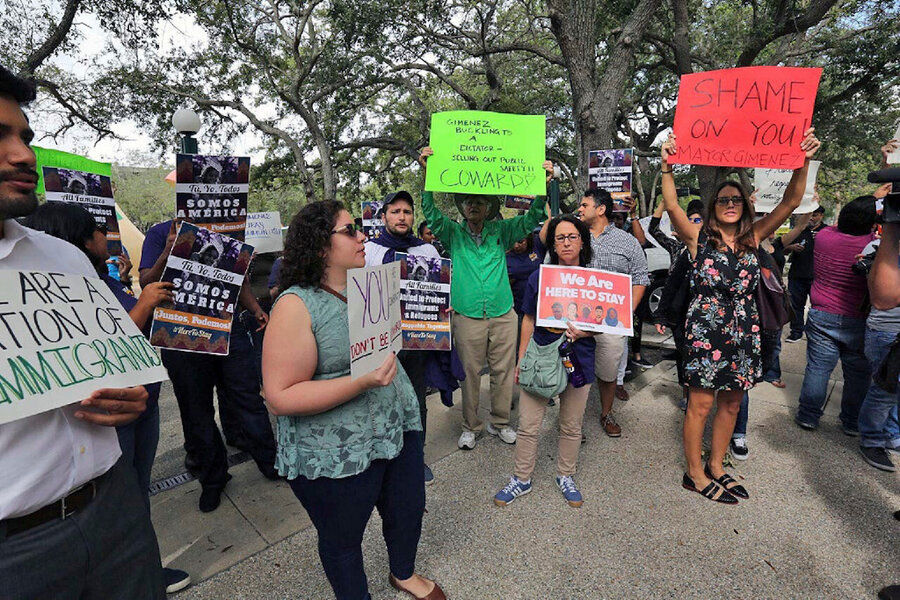Why Miami-Dade County could turn undocumented immigrants over to the feds
Loading...
As of Thursday, jails in Florida’s Miami-Dade County are to hold undocumented detainees indefinitely while federal authorities prepare deportation proceedings.
This decision reverses the county’s four-year-old policy of refusing to detain undocumented lawbreakers so Immigration and Customs Enforcement (ICE) could deport them. More than 300 so-called sanctuary cities and counties employ similar policies to obstruct federal immigration authorities and prevent deportations.
These jurisdictions are in the crosshairs of an executive order signed by President Trump on Wednesday, which aims to cut off their federal funding. Grants from Uncle Sam underwrite a wide range of local programs, from ports and roads to public housing and HIV prevention.
In a move that could put pressure on other counties to follow suit, Miami-Dade decided that the cost of losing these grants – expected to be worth $355 million this year – was simply too high to oppose Trump’s policy.
“I want to make sure we don’t put in jeopardy the millions of [dollars in] funds we get from the federal government for a $52,000 issue,” County Mayor Carlos Giménez told the Miami Herald. Last year, the county saved about $52,000 by not detaining undocumented immigrants past their normal release dates.
Miami-Dade has never defined itself as a “sanctuary county.” It began refusing to detain immigrants indefinitely in 2013 as a cost-cutting measure, citing insufficient reimbursement from the federal government.
Even so, Mr. Trump, who arrived in office pledging to crack down on illegal immigrants, welcomed Mr. Giménez’s announcement as an early success for his executive order. “Miami-Dade Mayor drops sanctuary policy. Right decision. Strong!” he tweeted.
Other large counties that also refuse to detain immigrants on behalf of ICE, such as Los Angeles County or Illinois’s Cook County, may soon face threats to change these policies or risk losing federal funding. Both counties contain major cities whose mayors have vowed to protect undocumented immigrants, and that have “sanctuary ordinances” of their own – for instance, barring city employees from disclosing residents' immigration status.
However, Miami-Dade County’s decision could set a precedent. As The Washington Post's Darla Cameron explained, “Because jails are typically run by counties, rather than cities, county policies can matter more to immigrants.”
Upon arriving in a county jail, inmates are fingerprinted and run against a federal database. If ICE spots an undocumented immigrant, it sends a “detainer request” asking the jail to hold the inmate long enough so that it can obtain a warrant for deportation.
Because detaining individuals without a warrant violates the Fourth Amendment, following these requests is voluntary. But the prospect of losing federal grant money under Trump convinced Miami-Dade County to comply.
Before other counties do likewise, they may choose to assess how much funding the federal government can really cut. Miami-Dade concluded that its $52,000 savings from non-compliance would be far outweighed by a loss of federal grants.
In reality, Trump may have few means to punish localities for sanctuary laws. Under the Supreme Court’s 1987 South Dakota v. Dole ruling, “[federal] funding can be withheld only for the specific initiative in question.” Other counties may conclude that they can defy the White House and preserve funding in other areas.
But on Thursday, the prospect of cuts to education, infrastructure, and more got Florida's most populous county behind Trump’s initiative.








